-Contributed by Emily Gainer
Emily Gainer has been the Special Collections Librarian at the CHP since May, 2012. A big part of her job is processing manuscript collections. Here, she gives us a first-person perspective of what that job looks like.
When an archivist begins processing (organizing and making available) a collection, it is similar to setting off on a journey. What is underneath the lids of those boxes? What new historical information will be discovered? How long will it take to finish?
This month, I began processing the Sigmund Koch papers. Koch (1917-1996) was a psychologist known for his critical perspective on psychological theories and approaches. In the mid-twentieth century, he advocated a less reductionist and more humanistic approach. Among other publications, Koch edited the six-volume set Psychology: A Study of a Science (1959-1963) and A Century of Psychology as Science (1985).

Edna Heidbreder and Sigmund Koch, undated photograph
The first step in processing is to segregate all the boxes into a workspace. I need plenty of room, especially for these 61 boxes. As I pull boxes off the shelf, I look for clues written on the boxes, such as numbers or topics. Unfortunately, the Koch boxes had little or no information. That means I will go through each box and determine what is inside, and then decide how it should be organized.
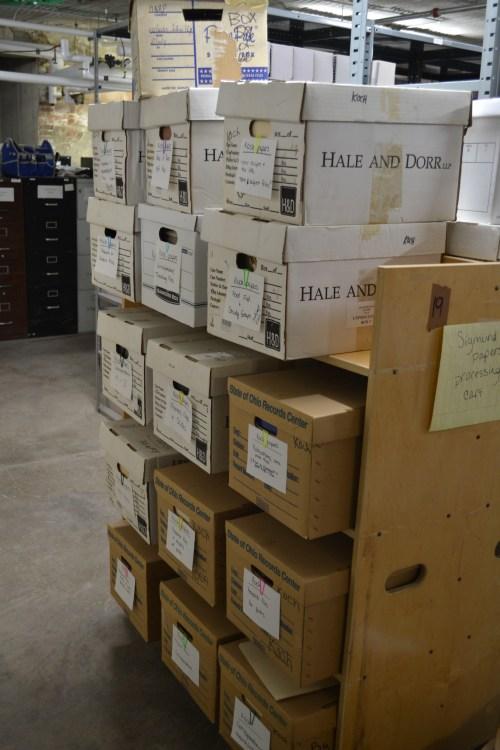
Each box weighs between 35-45 pounds, so a sturdy table or cart is important.
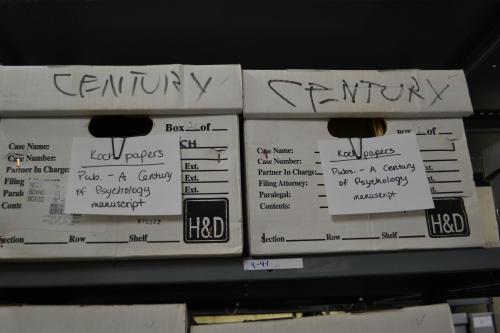
Some boxes have clues on them – notice “Century” written on the lid. After evaluating the contents, I clipped the note on the front.
The next step is to pop the lid off all 61 boxes and take a look inside. Mainly, I am looking for dates and what types of materials, such as correspondence, teaching files, or publications, are inside the boxes. Immediately, I identified at least eight different types of materials. These will form the basic organization structure. The main goal of organizing the files is to help researchers find what they are looking for. For example, all of the teaching files will be organized into one series. All the research files relating to the manuscript A Century of Psychology as Science will be organized and inventoried.
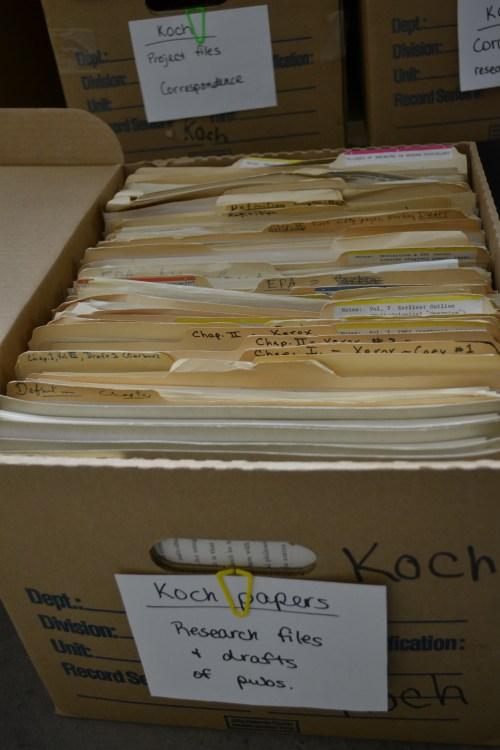
I look for clues both outside and inside to identify what each box contains.
The initial steps on the journey also reveal interesting information about Koch as a person. For example, there were many photographs of dogs. He must have owned and/or liked dogs. It also leads to some fundamental questions. Is this a young Koch? The photographs are not labeled. Perhaps our readers can help!
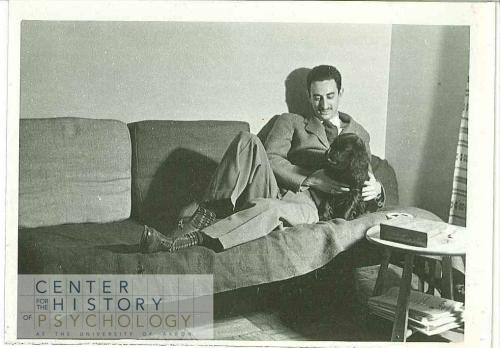
These 1940s photographs are not identified. Is this Koch (around the age of 30) with his dog?
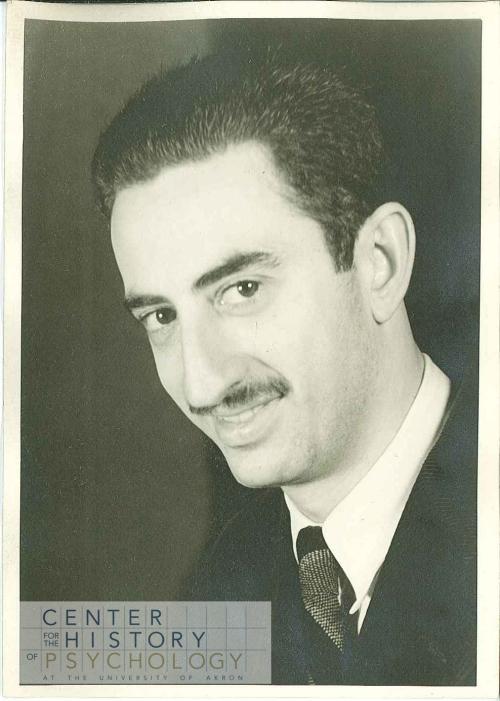
In 1945, Sigmund Koch would have been 28 years old. Can anyone tell if this is him?
The next phase of processing is pulling like materials and start organizing. This involves delving further into each box. Considering the size of the collection and the current organization, I estimate the processing will take up to 6 months. Look for more blog entries as the journey continues!
